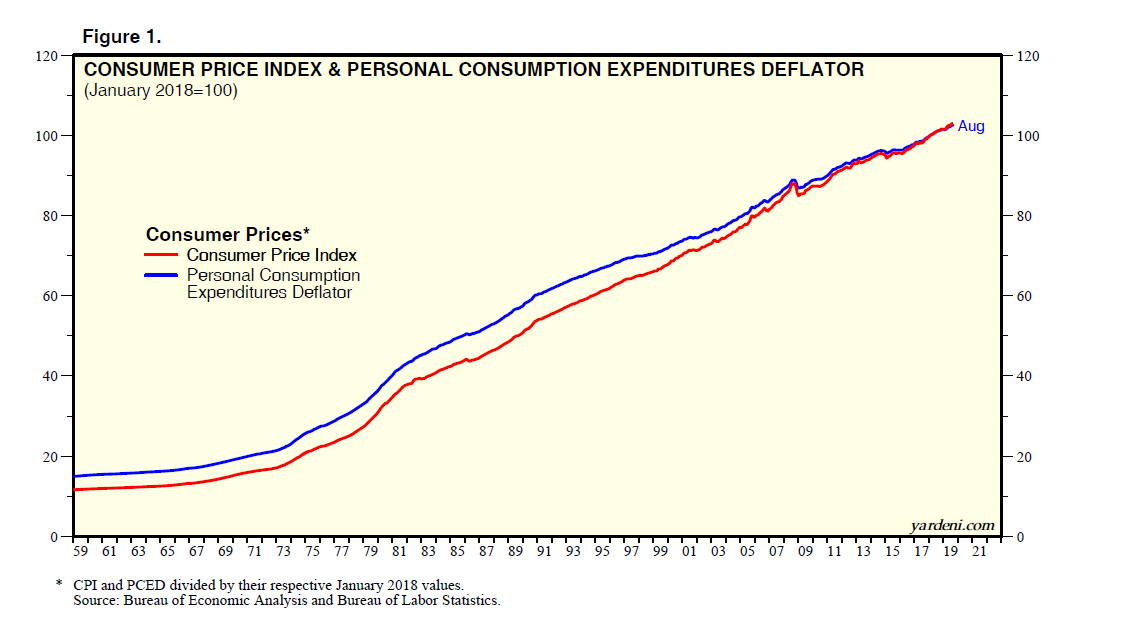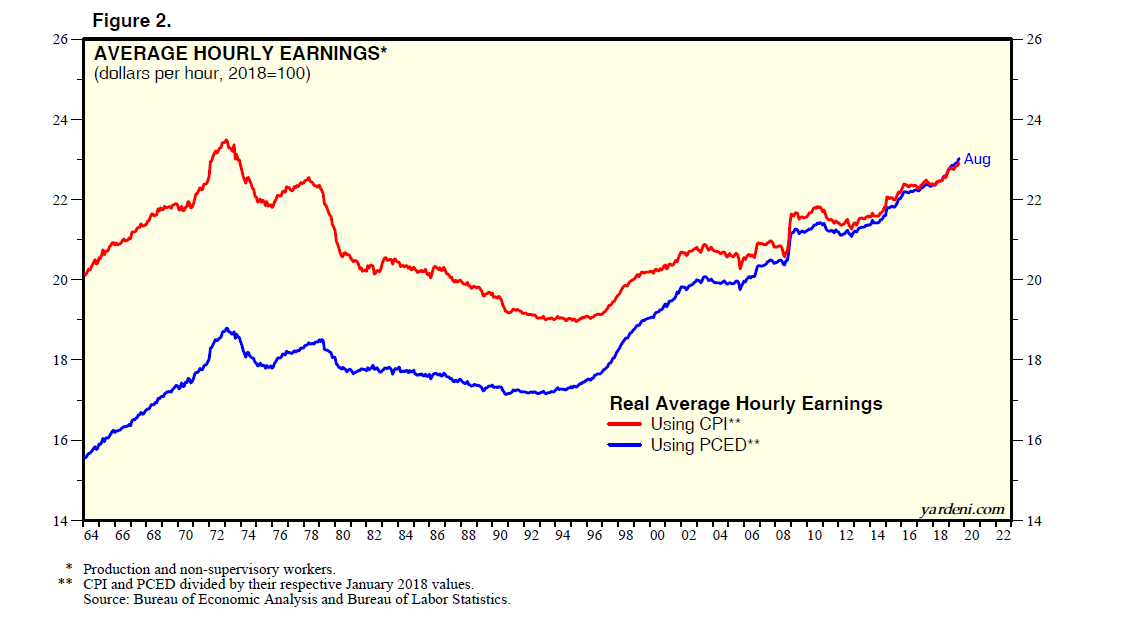
The key to a happy economic outlook and a continuation of the bull market in stocks is productivity growth. I think productivity growth is starting to make a comeback as the labor market gets tighter. If so, then wages—which have been rising faster than prices since the mid-1990s—would rise at a faster clip. Faster growth of real wages likely would more than offset the supply-side slowdown in payroll employment growth. A quicker pace of productivity growth would keep a lid on inflation. Profit margins would remain at recent historical highs or even go higher. The bull market in stocks would continue as earnings moved higher.
At a meeting recently in San Francisco with one of our accounts, I was asked to explain why an 8/7/18 Pew Research Center study disputed my claim that real wages have been rising for many years. The fellow came prepared with a copy of the piece, titled “For most U.S. workers, real wages have barely budged in decades.”
Right at the top is a chart showing that the purchasing power of average hourly earnings has been flat for 40 years! Can that possibly be right? Nope, it cannot be right. It makes absolutely no sense. In fact, it’s total nonsense. Consider the following:
(1) Agreeing on wage measure. The author of the study and I both focus on the average hourly earnings (AHE) of production and nonsupervisory workers. The series starts in January 1964, while the series for all workers is available only since March 2006. But the less comprehensive series has covered around 80%-84% of all workers and isn’t as skewed by the wages of top earners.
(2) Disagreeing on price measure. The Pew study divided AHE by the CPI indexed to 2018 dollars. It is well known that the CPI is upwardly biased, especially compared to the personal consumption expenditures deflator (PCED) (Fig. 1). Since January 1964 through August of this year, the CPI is up 728% while the PCED is up 539%, both indexed to 2018.
Over this same period, AHE is up 844%. Adjusted by the CPI, AHE was $22.90 during August, no higher than it was during late 1973, confirming Pew’s alarming and depressing headline (Fig. 2). Adjusted by the PCED, the AHE was the same, but up 48% over the same period!
(3) Making sense. The PCED-adjusted measure of the real wage makes much more sense. It rose during the second half of the 1960s before stagnating during the 1970s as a result of two oil price shocks and during the 1980s as a result of deindustrialization. It rebounded, along with productivity growth, during the second half of the 1990s in an uptrend into record-high territory since the late 1990s that persists to this very day.

